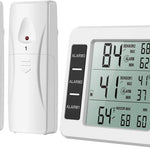You have no items in your shopping cart.
In today's digital age, electronic devices have become an integral part of our daily lives. From smartphones to laptops, we rely on these gadgets for communication, entertainment, and productivity. However, with technological advancements leading to frequent upgrades, the question of what to do with old electronics arises. Recycling electronics at home is not only environmentally responsible but also helps prevent electronic waste from ending up in landfills. In this comprehensive guide, we'll explore various methods and tips for recycling electronics at home, ensuring a sustainable approach to disposing of your old gadgets.
Understanding the Importance of Recycling Electronics
Electronic waste, or e-waste, poses significant environmental and health risks if not disposed of properly. Many electronic devices contain hazardous materials such as lead, mercury, and cadmium, which can leach into the soil and water, contaminating the environment. By recycling electronics, we can recover valuable resources like metals, plastics, and glass, reducing the need for raw materials and minimizing the environmental impact of electronic manufacturing.
The Environmental Impact of Electronic Waste
Electronic waste contributes to pollution, greenhouse gas emissions, and depletion of natural resources. Improper disposal methods, such as incineration or landfilling, release toxic chemicals into the air and soil, posing risks to human health and ecosystems. Recycling electronics conserves energy and reduces greenhouse gas emissions associated with the extraction and processing of raw materials.
Health Risks of Improper Electronic Disposal
Exposure to hazardous substances found in electronic devices can lead to various health problems, including respiratory issues, neurological disorders, and cancer. Children and communities living near e-waste recycling facilities are particularly vulnerable to health risks associated with exposure to toxic chemicals. Proper recycling practices help mitigate these risks and protect public health.
Methods of Recycling Electronics at Home
Recycling electronics at home may seem daunting, but with the right approach, it can be convenient and rewarding. Here are several methods you can use to recycle your old gadgets responsibly:
1. Local Recycling Programs
Many communities offer electronics recycling programs or designated drop-off locations where you can dispose of old electronics free of charge. Check with your local government or waste management authority to find out about available recycling options in your area.
2. Manufacturer Takeback Programs
Several electronics manufacturers have takeback programs that allow customers to return old devices for recycling. These programs ensure that electronic products are recycled responsibly, often providing incentives such as discounts on future purchases or trade-in credits.
3. Retailer Recycling Initiatives
Some retailers offer recycling services for electronic devices, allowing customers to drop off old gadgets when purchasing new ones. Look for retailers that participate in recycling initiatives and inquire about their recycling policies and procedures.
4. Electronic Recycling Events
Many communities host electronic recycling events or e-waste drives where residents can bring their old electronics for recycling. These events are often organized by local authorities or nonprofit organizations and provide a convenient way to dispose of electronic waste responsibly.
5. Mail-In Recycling Programs
Several organizations and recycling companies offer mail-in recycling programs for electronic devices. Simply package your old gadgets and mail them to the designated recycling facility, where they will be processed and recycled according to environmental standards.
6. Donation to Charitable Organizations
Consider donating your old electronics to charitable organizations, schools, or community centers instead of disposing of them. Many organizations accept working or gently used electronics and refurbish them for reuse or distribute them to those in need.
7. DIY Recycling Projects
Get creative and repurpose old electronic devices for DIY projects or upcycling ideas. From turning old smartphones into security cameras to transforming obsolete laptops into digital photo frames, there are countless ways to give new life to old gadgets.
8. Trade-In Programs
Some retailers and electronics manufacturers offer trade-in programs where you can exchange your old devices for credit towards the purchase of new ones. Take advantage of these programs to upgrade your gadgets while responsibly disposing of the old ones.
9. Certified E-Waste Recyclers
When choosing a recycling service or facility, opt for certified e-waste recyclers that adhere to environmental and safety standards. Look for certifications such as R2 (Responsible Recycling) or e-Stewards to ensure that your electronic waste is handled responsibly.
10. Data Erasure and Security
Before recycling your old electronics, ensure that you wipe all personal data and sensitive information from the devices. Use data erasure software or factory reset options to remove any stored data and protect your privacy.
Best Practices for Recycling Electronics
To maximize the effectiveness of electronic recycling efforts and minimize environmental impact, follow these best practices:
1. Remove Batteries and Accessories
Before recycling electronic devices, remove batteries, chargers, and accessories such as cases or cables. These items may contain materials that require separate recycling processes and should be disposed of accordingly.
2. Clean and Prepare Devices
Clean your electronic devices and remove any dust, dirt, or debris before recycling them. Proper cleaning ensures that recycling facilities can process the devices efficiently and minimizes contamination of recyclable materials.
3. Secure Data and Personal Information
Protect your privacy by securely erasing all data and personal information from electronic devices before recycling them. Use data wiping software or perform a factory reset to ensure that no sensitive information is left behind.
4. Research Recycling Options
Research local recycling options and choose reputable recycling services or facilities that prioritize environmental responsibility and adhere to industry standards. Verify certifications and credentials to ensure that your electronic waste is handled ethically.
5. Educate Yourself and Others
Stay informed about electronic recycling practices and share your knowledge with others to raise awareness about the importance of responsible e-waste management. Encourage friends, family, and colleagues to recycle their old electronics and adopt sustainable habits.
6. Reduce and Minimize Electronic Waste
Practice conscious consumption by reducing unnecessary electronic purchases and extending the lifespan of your devices through proper maintenance and care. Consider repairing or upgrading old gadgets instead of replacing them whenever possible.
7. Advocate for Policy Changes
Support policies and initiatives that promote sustainable electronics recycling practices and hold manufacturers accountable for product stewardship and end-of-life management. Advocate for extended producer responsibility (EPR) laws and regulations to ensure that electronics manufacturers take responsibility for recycling and disposal.
The Ultimate Guide to Recycling Electronics at Home
Recycling electronics at home is not only beneficial for the environment but also contributes to resource conservation and pollution prevention. By following the tips and methods outlined in this guide, you can make a positive impact on the planet and reduce your carbon footprint. Remember to prioritize responsible recycling practices, educate yourself and others about e-waste management, and advocate for policy changes that support a circular economy. Together, we can create a more sustainable future for generations to come.
FAQs (Frequently Asked Questions)
-
How can I recycle old cell phones and smartphones?
- Old cell phones and smartphones can be recycled through manufacturer takeback programs, retailer recycling initiatives, or local recycling programs. Ensure that you remove any personal data and accessories before recycling them.
-
What should I do with old batteries and chargers?
- Old batteries and chargers should be recycled separately from electronic devices. Many retailers and recycling centers accept batteries for recycling, while some manufacturers offer takeback programs for chargers and accessories.
-
Can I recycle broken or non-functional electronics?
- Yes, many recycling programs accept broken or non-functional electronics for recycling. While some components may be salvaged or refurbished, others will be recycled for their raw materials.
-
Is it safe to donate old electronics to charity?
- Donating old electronics to charity is generally safe, but it's important to ensure that the devices are in working condition and free of personal data. Choose reputable organizations that accept electronic donations and verify their donation policies.
-
What happens to recycled electronics?
- Recycled electronics undergo a series of processes, including disassembly, shredding, and sorting, to recover valuable materials such as metals, plastics, and glass. These materials are then recycled and used to manufacture new products.
-
Are there any environmental benefits to recycling electronics?
- Yes, recycling electronics conserves energy, reduces greenhouse gas emissions, and prevents the depletion of natural resources. By recycling electronic waste, we can minimize pollution and environmental degradation associated with electronic manufacturing and disposal.
Recycling electronics at home is a simple yet impactful way to reduce waste, conserve resources, and protect the environment. By following the guidelines and tips provided in this ultimate guide, you can play a vital role in promoting sustainability and responsible consumption. Remember to research local recycling options, securely erase personal data from devices, and advocate for policies that support e-waste management. Together, we can make a difference and build a more sustainable future for generations to come.







![100% Compostable 9 Inch Paper Plates [125-Pack] Heavy-Duty, Natural Disposable Bagasse Plate, Eco-Friendly Made of Sugarcane Fibers - Natural Unbleached Brown 9" Biodegradable Plate by Stack Man](http://www.trashrite.com/cdn/shop/products/418LbW6FSUL_150x150_crop_center.jpg?v=1689802541)
